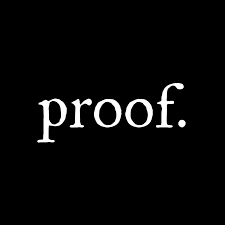You Can’t Argue With Proof.
I spend a good amount of time preading crumbs around the web on the topic of brand strategy. It’s a topic surrounded by lots of babble and very little real framework.
But here’s the real deal: Brand strategy needs to be codified to be followed. It has to be practicable, so managers and agents have a way to see if the work in on or off strategy. At What’s The Idea?, clients are provided with a framework called a Claim and Proof Array: One claim and three proof planks.
Most advertising is heavy on claim and light on proof. Ask any med-student about proof or evidence and you’ll get the same answer. It undergirds their profession. Why doesn’t branding? Because we’re creative?
I discovery I deal in customer care-abouts and brand good-ats. But often care-abouts and good-ats aren’t evidence. “I like my food hot at a restaurant,” is a care-about. But not a proof. “My ginger beer uses the freshest ginger” is a good-at, not a proof.
When I sit in my chair surrounded by piles of research and interview notes, preparing to boil down findings into a salient compelling claim and proof array, I look for proof. And nothing but the proof.
It’s how brand strategy works at What’s The Idea? It’s why the success rate selling brand strategy (first draft) is flawless. You can’t argue with proof. Ask a doctor.
Peace.





